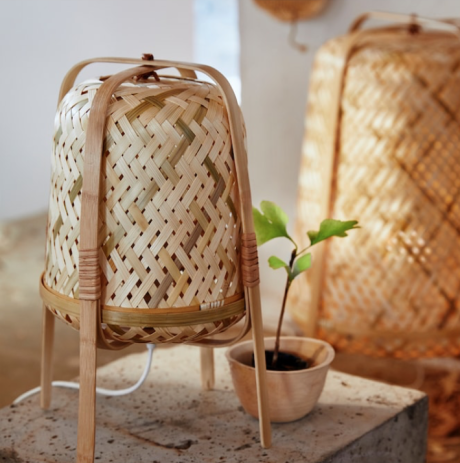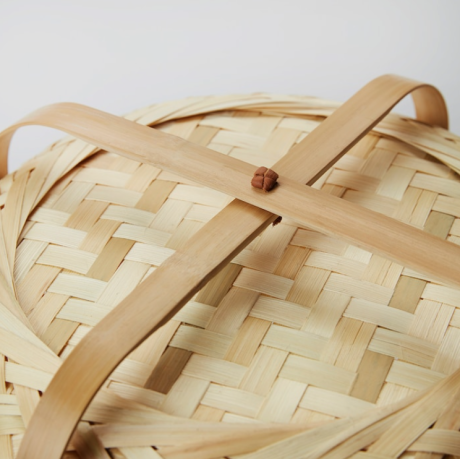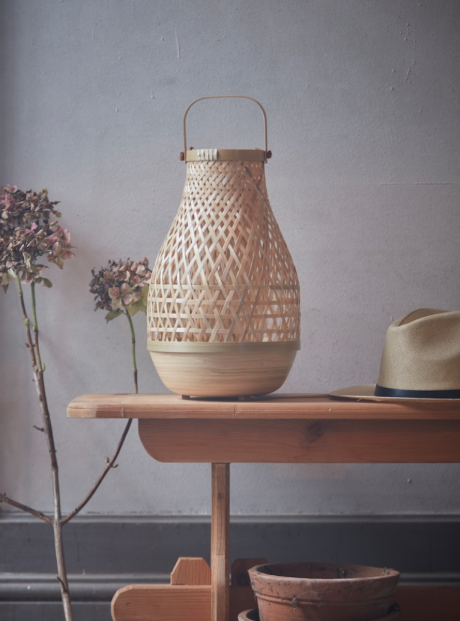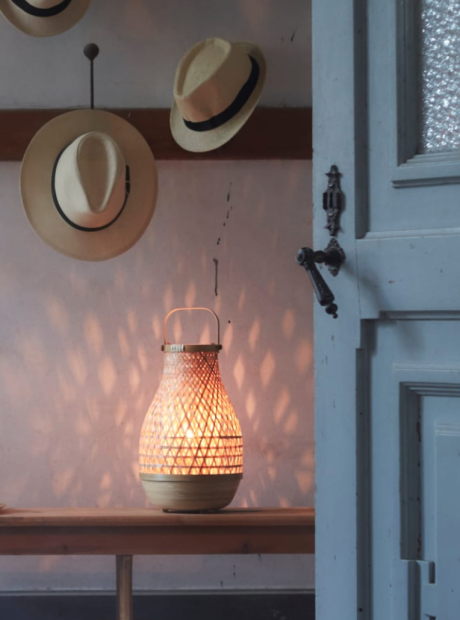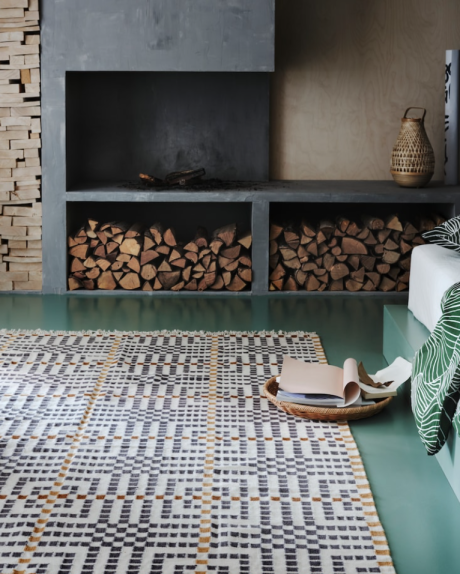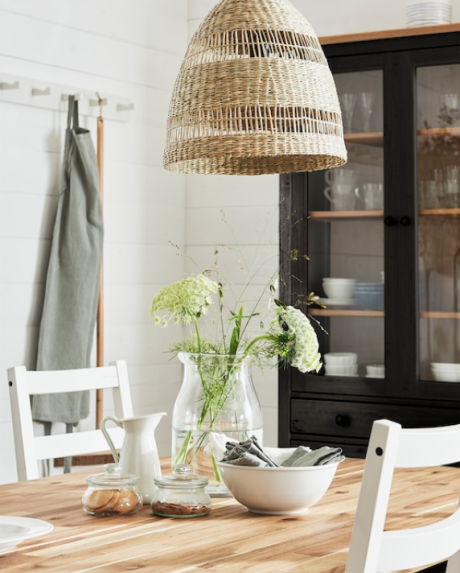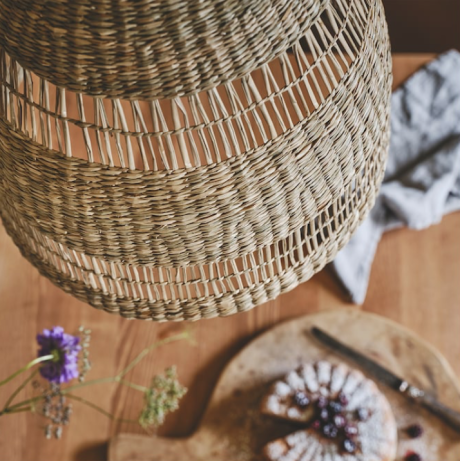Knixhult, Misterhult and Torared
“The idea with KNIXHULT was to make a lamp with a minimal environmental footprint. That’s why we chose bamboo – a carbon-positive material which removes more carbon dioxide from the atmosphere than it adds. At the factory, we discovered that bamboo with darker colour tones was discarded, so we made a pattern that allows for greater variation. I’m glad we’ve used a carbon-positive material, harnessed more raw material and made a natural-looking lamp that lasts a long time” says Emma Olbers.
Setting out to make a sustainable icon
In their efforts to create more sustainable lamps, the IKEA lighting team turned every stone to find the perfect solution. By including bamboo that would otherwise be seen as waste, IKEA Product Developer Anna Granath and Designer Emma Olbers created a lamp with a really small climate footprint.
From the beginning, Anna and Emma knew they wanted to work with a natural fibre. They were attracted to bamboo for its fast growing properties, and because it was grown close to the suppliers, cutting out unnecessary transport emissions. Although bamboo is already considered to be a renewable resource, the team wanted to push the boundaries further to achieve an even lower climate footprint. To do this, they went from plantation to factory to get a picture of the whole process – how the bamboo grows, how it is harvested, and how it is chopped and sliced to slats to be ready for the weavers. They noticed that a lot of beautiful material with a slightly different colour or too many dark spots would be singled out and thrown away. It has been common practice to only use the bamboo slats with minor or no colour variations at all. They found the piles of untreated and unbleached material to be the most beautiful, and realised that the quality was the same.
“It was also a challenge to convince the talented craftsmen that we saw the bamboo waste as something authentic and beautiful” says Emma Olbers.
The unbleached and untreated material from the plantation was brought to the Vietnamese weavers. Using as much bamboo as possible, together they created a pattern with a wider variation of natural colours. The use of raw material was bigger than ever – previous lamps used around 18% of the raw material, but KNIXHULT uses 65%. And it’s not only the reduced bamboo waste Anna and Emma are pleased about. The lamp shade is stackable so the transport doesn’t require so much space, and the use of plastic in the packaging is reduced. The whole lamp is also really easy to separate and recycle when it reaches the end of its life, and no metal or plastic is included except for what is in the lighting components. So did KNIXHULT become a sustainable icon? Perhaps only time will tell. And the team is already on a quest to find the next one.

